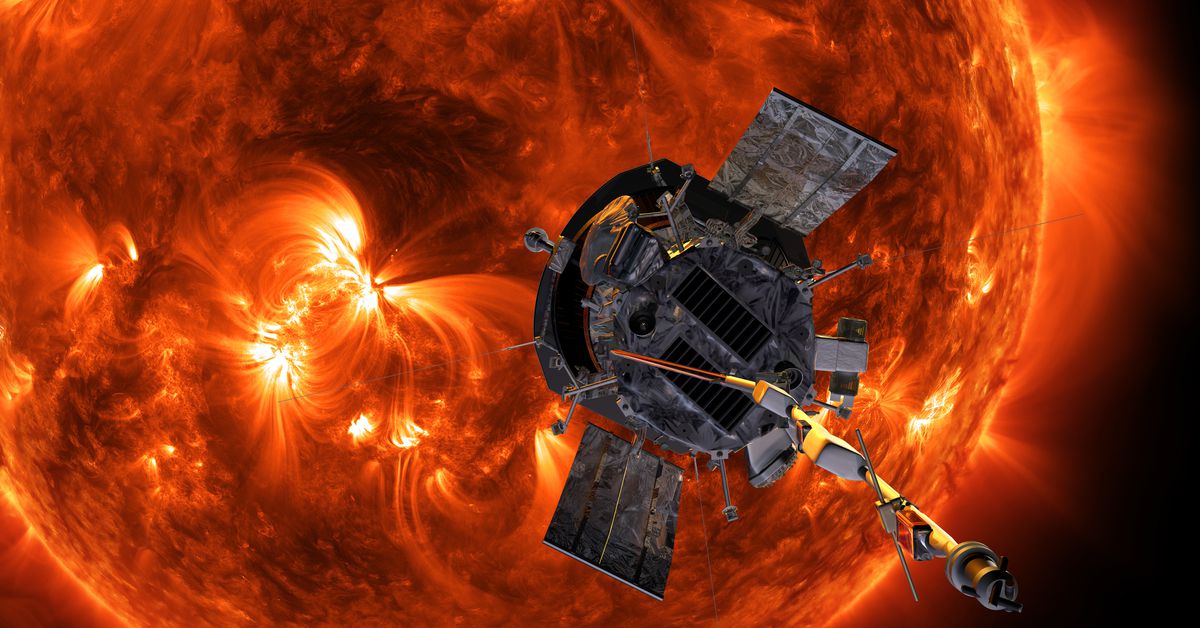Parker Solar Probe Successfully Surveys the Surface of the Sun
In a groundbreaking achievement, NASA’s Parker Solar Probe has ventured an unprecedented 3.8 million miles from the surface of the Sun and emerged unscathed. The probe transmitted a signal back to Earth on December 26th, indicating that it is in good health and operating normally.
A Historic Mission
This mission marks the closest approach ever made by a human-made object to the Sun. The Parker Solar Probe was launched on August 12, 2018, as part of a collaborative effort between NASA and Johns Hopkins Applied Physics Laboratory. Its primary objective is to study the solar corona, the outer atmosphere surrounding the Sun, which reaches temperatures of over 1 million degrees Celsius.
The Closest Flyby
On December 20th, the Parker Solar Probe embarked on its perilous journey towards the Sun, with mission operations temporarily going out of contact with the probe. The closest approach occurred on December 24th, as the probe flew at an incredible 430,000 miles per hour past the solar surface.
Surviving the Extreme Conditions
To withstand the intense heat generated by its proximity to the Sun, the Parker Solar Probe is equipped with a Sun-facing heat shield that can withstand temperatures of up to 2,500 degrees Fahrenheit. In contrast, the probe itself remains at a relatively comfortable temperature of around 85 degrees Fahrenheit.
Gathering Valuable Data
The close flyby is expected to provide scientists with valuable insights into the solar wind, the Sun’s heat, and the acceleration of energetic particles to near light speed. The data collected by the Parker Solar Probe will help researchers better understand the mechanisms that govern these phenomena and improve our understanding of the Sun’s behavior.
What to Expect Next
With confirmation of the mission’s success, NASA is expecting the Parker Solar Probe to transmit detailed telemetry data on its status as early as January 1st. This data will provide a more comprehensive picture of the probe’s performance and help scientists make informed decisions about future missions.
The Significance of this Mission
The Parker Solar Probe’s historic flyby is a testament to human ingenuity and the scientific community’s unwavering commitment to exploration and discovery. By pushing the boundaries of what we thought was possible, scientists are one step closer to unraveling the mysteries of the Sun and its impact on our solar system.
The Future of Space Exploration
This mission serves as a reminder of the incredible achievements that can be accomplished through collaboration, innovation, and a willingness to take risks. As we continue to push the boundaries of space exploration, it is essential to recognize the significance of this mission and the potential for future breakthroughs in our understanding of the universe.
The Importance of Studying the Sun
Studying the Sun is crucial for advancing our knowledge of the solar system and its effects on Earth. By understanding the mechanisms that govern the Sun’s behavior, scientists can better predict space weather events, such as solar flares and coronal mass ejections, which have significant implications for satellite communications, power grids, and even human health.
The Parker Solar Probe’s Equipment
To ensure the probe’s success, engineers designed a range of innovative instruments to withstand the extreme conditions near the Sun. The Parker Solar Probe is equipped with:
- Solar Wind Electrons Alphas and Protons (SWEAP) Instrument: Measures the velocity, density, and temperature of solar wind particles.
- WISPR (Wide-Field Imager for the Solar Probe Plus): Provides high-resolution images of the Sun’s corona and inner heliosphere.
- Fields Experiment Suite (FIELDS): Measures the magnetic field and electric field in the vicinity of the Sun.
The Collaborative Effort
The Parker Solar Probe is a shining example of international collaboration, with contributions from NASA, Johns Hopkins Applied Physics Laboratory, and other institutions around the world. This mission demonstrates that when experts come together to share knowledge, resources, and expertise, they can achieve incredible feats that advance our understanding of the universe.
Conclusion
NASA’s Parker Solar Probe has successfully navigated the extreme conditions near the Sun, providing a wealth of valuable data for scientists to study. As we continue to explore the mysteries of the universe, it is essential to recognize the significance of this mission and the potential for future breakthroughs in our understanding of the solar system.





